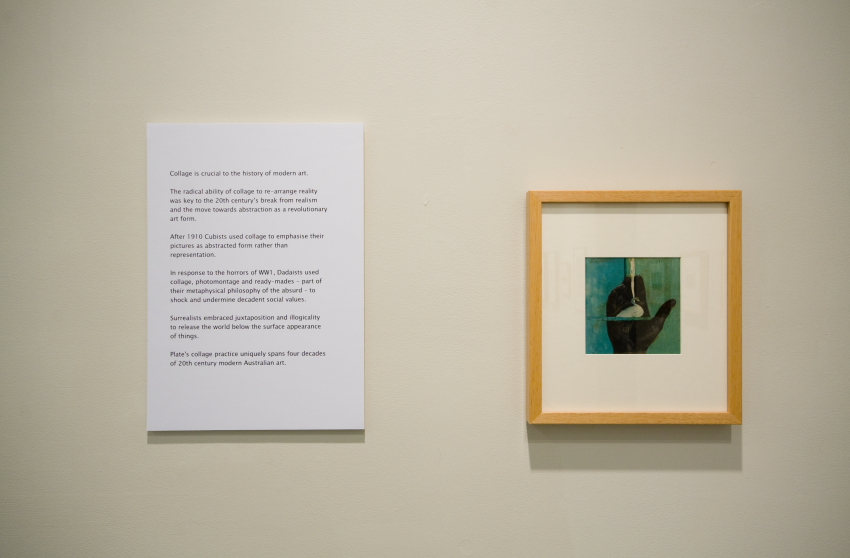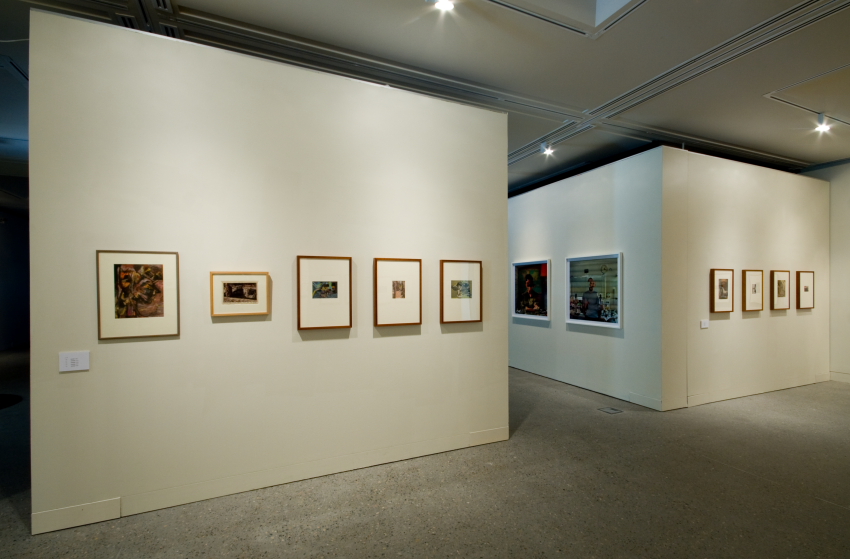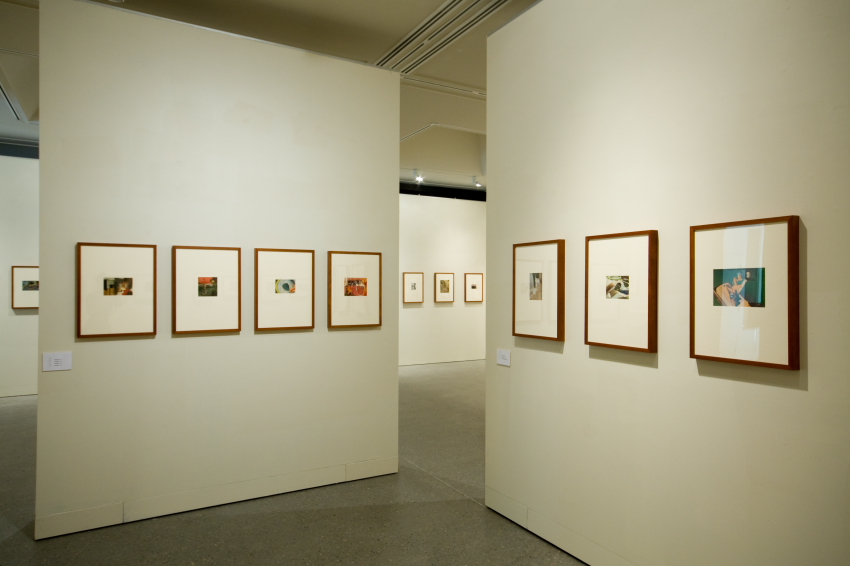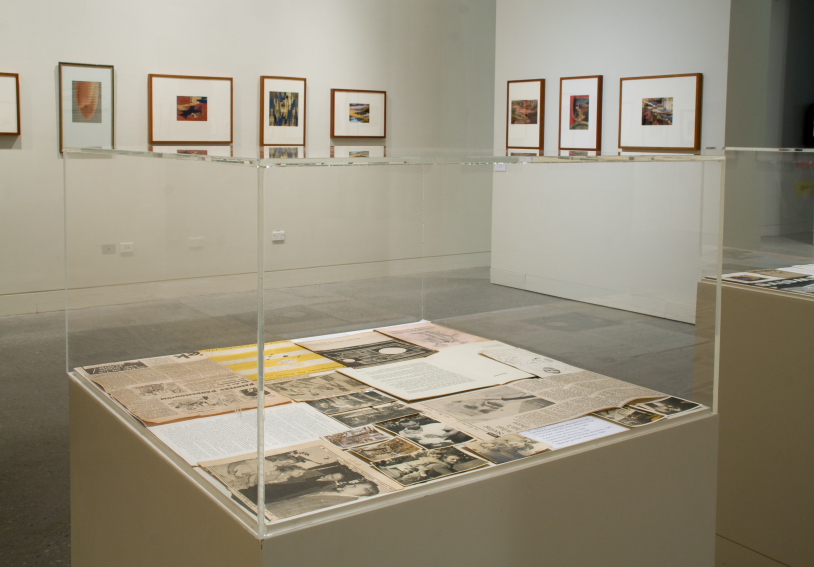28 March 2009 to 3 May 2009

Image: Carl Plate, Two Levels, collage on paper. Courtesy the estate of Carl Plate.
This landmark exhibition featured 80 vivid works from 1938 to 1976 and was only the third major exhibition of collage in Australia. It provided a rare opportunity to view the outcome of a four-decade-long exploration of collage form and method in works that had never been publicly exhibited.
Exposed to Surrealism in the late 1930’s in London and Europe, Plate saw the movement as an escape from realism and a route towards abstraction. He saw collage as the creation of gaps through which imagination and ideas beyond the control of rational thought could erupt.
Plate returned to Australia in 1940 with his earliest collages, along with the work of 32 artists he had met abroad, including Henry Moore, Barbara Hepworth, Ben Nicholson and Duncan Grant. Their work was exhibited by Plate for the first time in Australia in his newly established Notanda Gallery in Sydney. In 1956 Plate exhibited his own collages at the Macquarie Galleries in Sydney and the Gallery of Contemporary Art, Melbourne. These collages revealed Plate’s exploration of new and changing dimensions in the 1950s and 60s and throughout his last period (1971-76).
Carl Plate’s practice as a collage artist ran parallel to his more public practice of painting. His paintings, particularly in the 50s and 60s, revealed his love of Woronora bush, which he looked into from his studio windows. His collage, on the other hand, were mostly produced away from the bush, either on long sea voyages or in Paris. The collage represented his engagement with a mediated reality rather than the Woronora bush. They signaled his engagement with contemporary ideas of process and conceptualism.
Carl Plate: Collage featured never before seen, extraordinary collages created by Plate in his final years. The works defied Surrealist logic by slicing narrow strips of paper in a repetitive pattern to create a dazzling optical effect. These post-cubist collages created a sense of time-splicing, prefiguring digital work produced in later decades. The late collages are a departure for the modernist, non-figurative artist. Unique post-futurist works, they explored illusionistic space in a decisive shift away from the flat picture plane of earlier abstraction.
The determinedly abstract subject matter of most of the work sets this collection apart from the work of most other Australian collage artists. This exhibition of Plate’s lifelong engagement with collage revealed the ways in which he engaged with the world.
Carl Plate: Collage 1938-1976 was curated by Plate’s daughter, cultural historian Dr Cassi Plate, who has spent the last two years researching, conserving, documenting and cataloguing Carl Plate’s 300 collages. The exhibition celebrated the long-term collage practice of a compelling and innovative abstract artist providing the public with the rare opportunity to view a lifetime of magnificent works.










